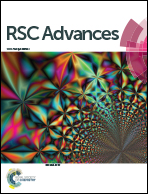Selective anti-cancer effects of palm phytonutrients on human breast cancer cells
Abstract
Palm oil contains a number of phytonutrients. To date, most of the studies using palm phytonutrients have focused on palm vitamin E. The objective of this study was to compare the anti-cancer activities of four major palm phytonutrients, namely tocotrienol-rich fraction, carotenoids, squalene and co-enzyme Q10 using some cell-based assays. Two human breast cancer cell lines, the highly aggressive triple-negative MDA-MB-231 and the estrogen-dependent MCF-7 cells, were treated with these palm phytonutrients to determine their anti-cancer effects. Palm vitamin E exhibited higher ability to induce cell death by apoptosis in both human breast cancer cells compared to the other palm phytonutrients (carotenoids, squalene and co-enzyme Q10), which was absent in normal NIH/3T3 cells. In addition, there was higher cleavage of the poly-adenosine diphosphate-ribose polymerase (PARP) enzyme in palm vitamin E-treated MDA-MB-231 cells compared to the other phytonutrients. All the tested palm phytonutrients suppressed the expression of nuclear factor kappa-light-chain-enhancer of activated B-cells (NF-κB) protein in the breast cancer cells exposed briefly to tumor necrosis factor-alpha (TNF-α). Palm phytonutrients possess varying extent of anti-cancer effects on the human breast cancer cells.


 Please wait while we load your content...
Please wait while we load your content...